It resembles the color of the Maldivian coastline, a beauty so unreal;
It’s like a celestial realm fallen to Earth, its beauty beyond the power of words to describe.
This is Paraiba tourmaline!
01
The Sensational Debut of Paraiba
In the early 1980s, a gemstone prospector named Heitor Barbosa believed that beneath a small hill, no larger than 400×200 meters and only 60 meters high, behind a tiny village in the state of Paraíba, Brazil, lay a mysterious gemstone unlike any other previously seen.
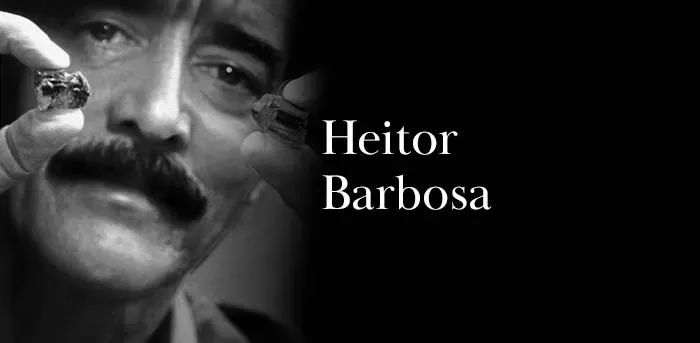
The region was notorious for its drought, rugged terrain, and poverty. With almost no water source, unbearably hot dry seasons, and crucially, no electricity, Heitor’s excavation progress was excruciatingly slow and difficult. After six years of fruitless digging, locals even nicknamed him “Foolish Heitor.”

However, nothing could deter Heitor’s determination. In 1987, Heitor unearthed a tourmaline with an enchanting, vivid blue and blue-green hue. This gem, emitting an electric-like glow, allowed humanity to witness such incomparable beauty in a gemstone for the first time in history.
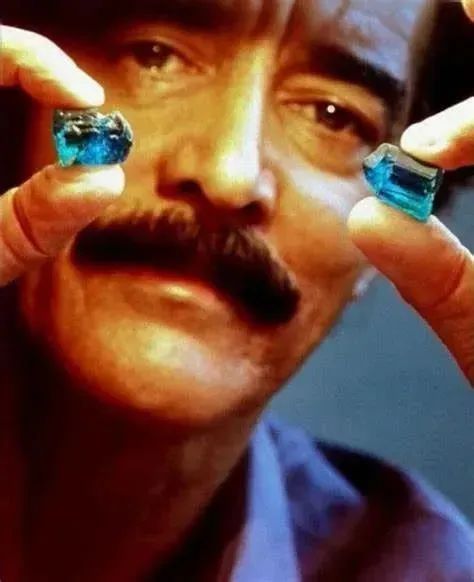
In 1990, this tourmaline made its public debut during a gem show in Tucson, Arizona. Its heart-stopping neon appearance initially raised some doubts. However, beauty is always the primary productive force. At the beginning of the gem show, these tourmalines were priced at $250 per carat. Six days later, the price had soared to $2,500 per carat. And this was in 1990!

Upon examination, it was determined that this tourmaline’s color was caused by copper and manganese, presenting a neon-like glow reminiscent of a futuristic world.
Consequently, the industry named tourmalines with blue (electric blue, neon blue, violet-blue), blue-green to green-blue, or green (or yellow-green) colors, of medium to high saturation and tone, primarily colored by copper and manganese, as “Paraiba tourmaline” after its place of discovery.

Soon, Paraiba became a highly sought-after star gemstone in the eyes of major brands, designers, and collectors, thanks to its unparalleled beauty. However, due to the scarcity of production in the Brazilian mines, they were quickly exhausted. Therefore, similar tourmalines later discovered in Nigeria and Mozambique continued to use the name Paraiba.
02
The Rolls-Royce of Tourmalines
Paraiba tourmalines are extremely difficult to mine, primarily done by hand, and the process takes longer. They are the most expensive variety among all tourmalines, frequently fetching astonishing prices at auctions.
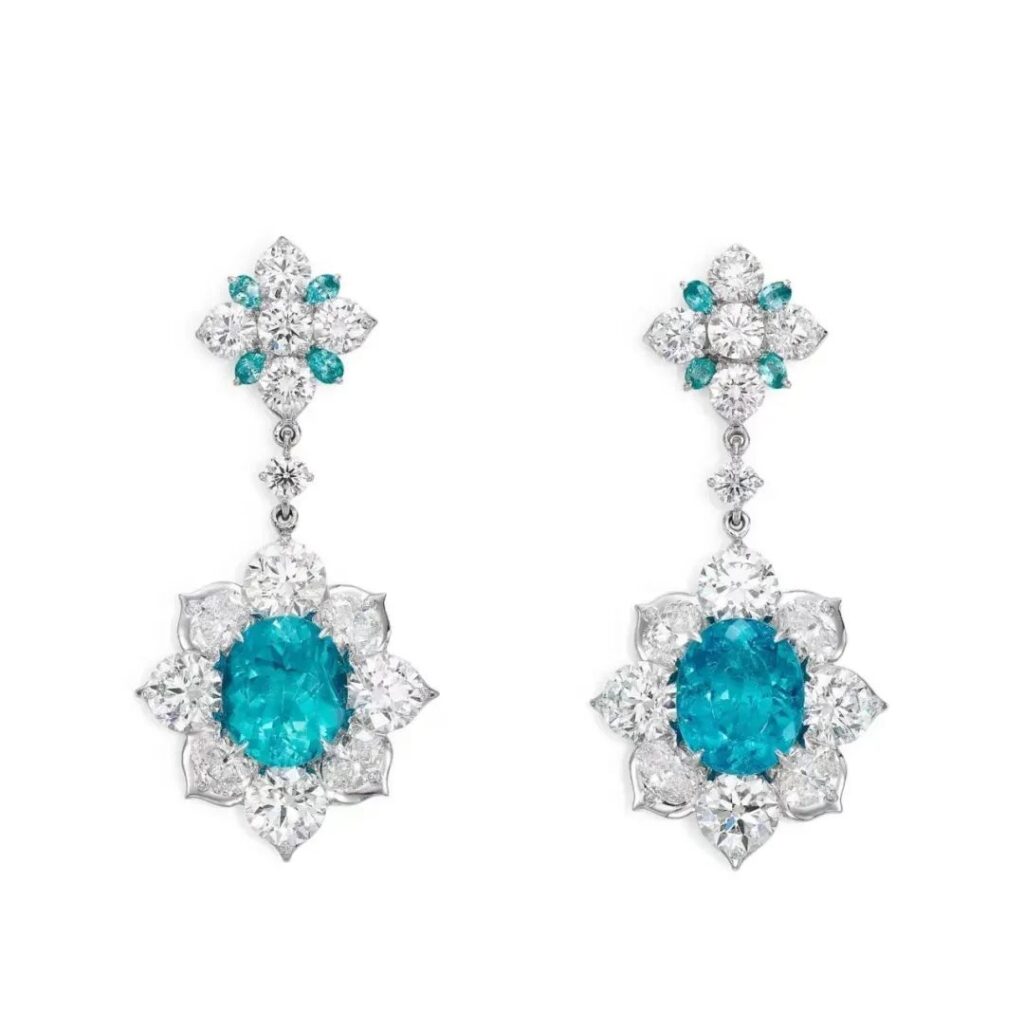
The earrings pictured above feature a pair of Brazilian Paraiba tourmalines weighing 2.59 carats and 2.32 carats respectively. They sold for 3.15 million Hong Kong dollars at a Sotheby’s auction in 2020.
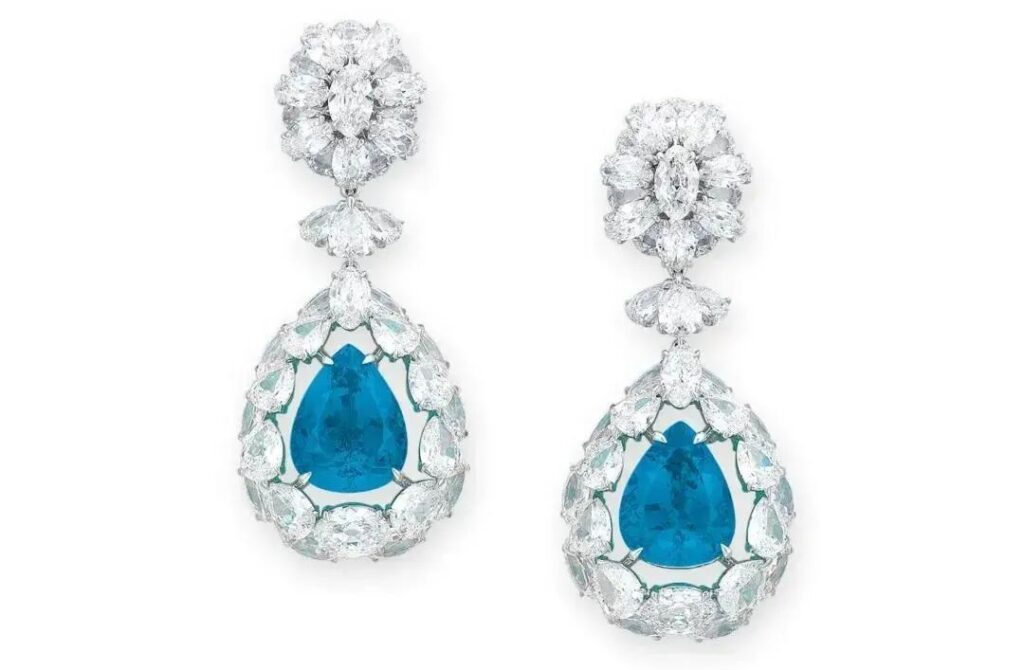
Another pair of earrings shown above are set with Paraiba tourmalines weighing 7.46 carats and 6.81 carats. These sold for a staggering 21.7 million Hong Kong dollars at a Christie’s auction in 2018.

Due to the extreme rarity of natural blue Paraiba tourmalines and the high demand for these beautiful gemstones, heat-treated blue-green Paraiba tourmalines began appearing in the international market as early as 2008. Heat treatment can remove the purple tones in Paraiba tourmalines, enhancing their blue-green hues.
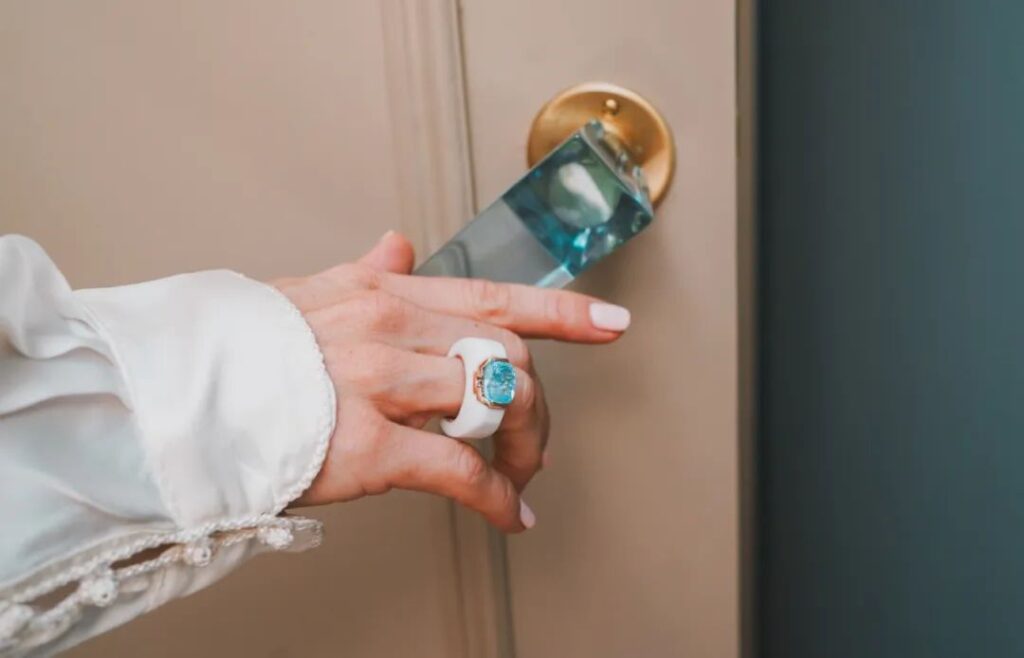
Currently, the vast majority of blue-green Paraiba tourmalines on the market have undergone heat treatment. These treated Paraiba tourmalines are considered equivalent to natural Paraiba tourmalines and are widely accepted internationally.
While already rare, unheated Paraiba tourmalines are even more scarce and of inestimable value. Generally, when purchasing Paraiba tourmalines, one can assume they have been heat-treated.
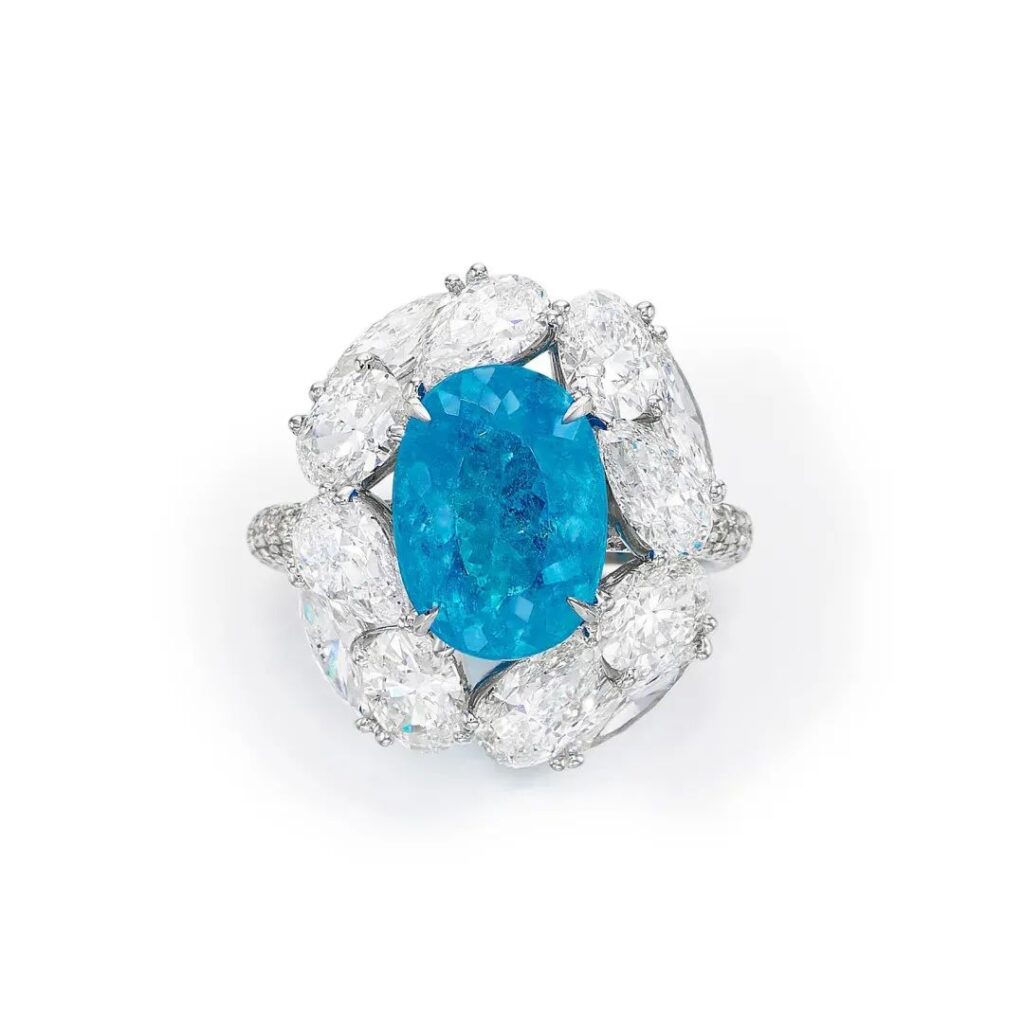
The ring pictured above features a 4.47-carat heat-treated Brazilian Paraiba tourmaline as the center stone. It sold for 3.02 million Hong Kong dollars at a Sotheby’s auction in 2021.
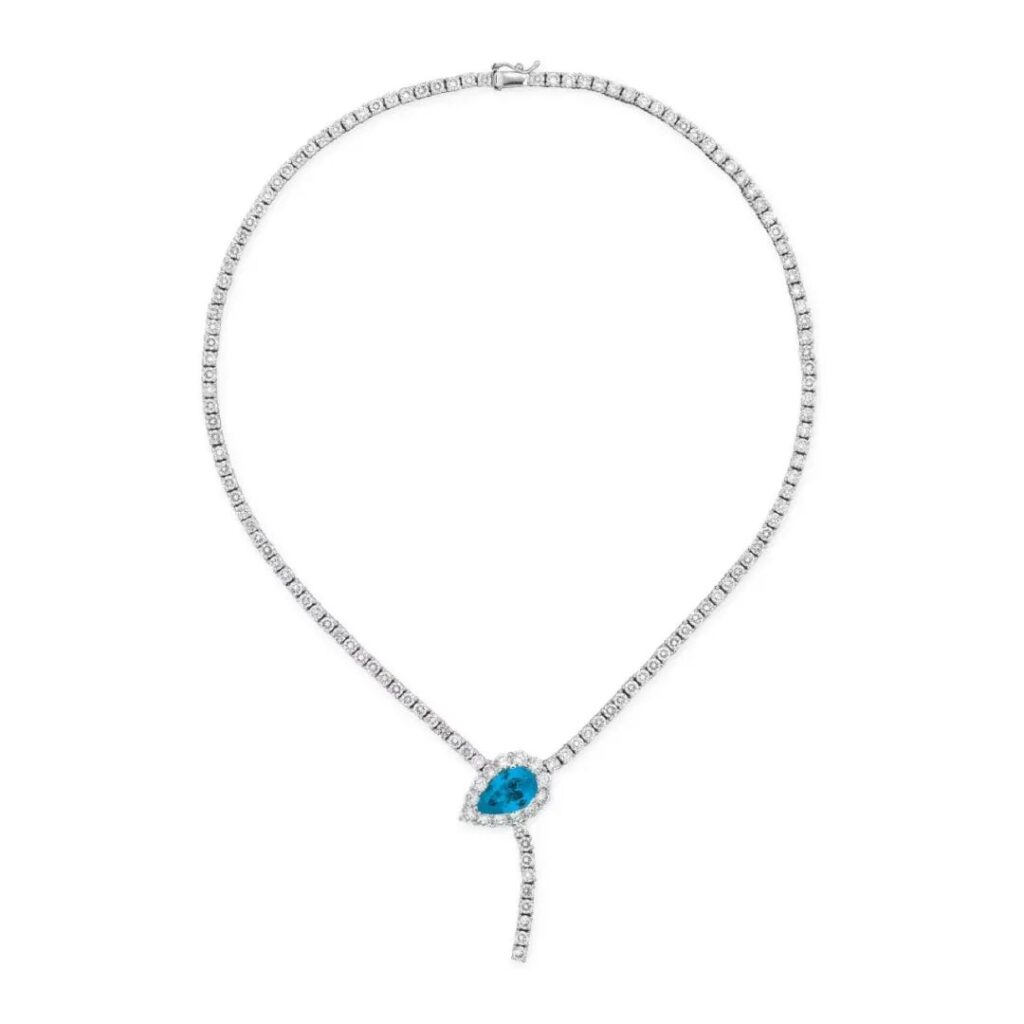
The necklace shown above has a 3.39-carat pear-shaped Paraiba tourmaline as its centerpiece. Originating from Brazil and certified as heat-treated by Gübelin, it sold for 2.89 million Hong Kong dollars at a Christie’s auction last month.
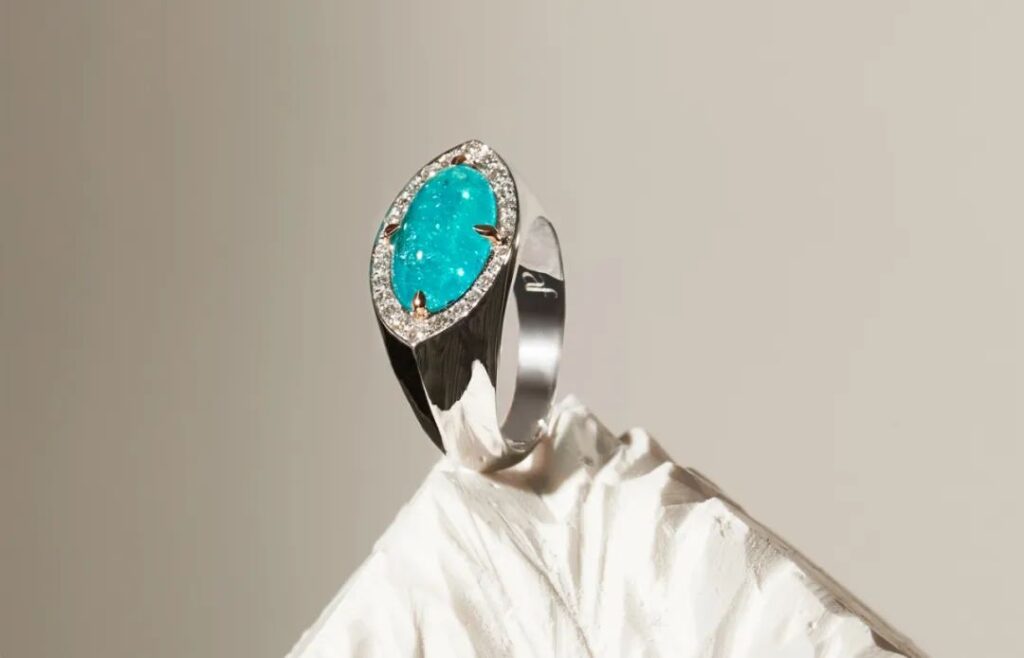
Currently, top-color and top-quality unheated Brazilian Paraiba tourmalines are extremely rare in the market, with per-carat prices long exceeding 100,000 US dollars. Paraiba tourmalines from Nigeria and Mozambique range in price from tens of thousands to hundreds of thousands per carat, depending on their quality.
03
How to Choose Paraiba Tourmaline
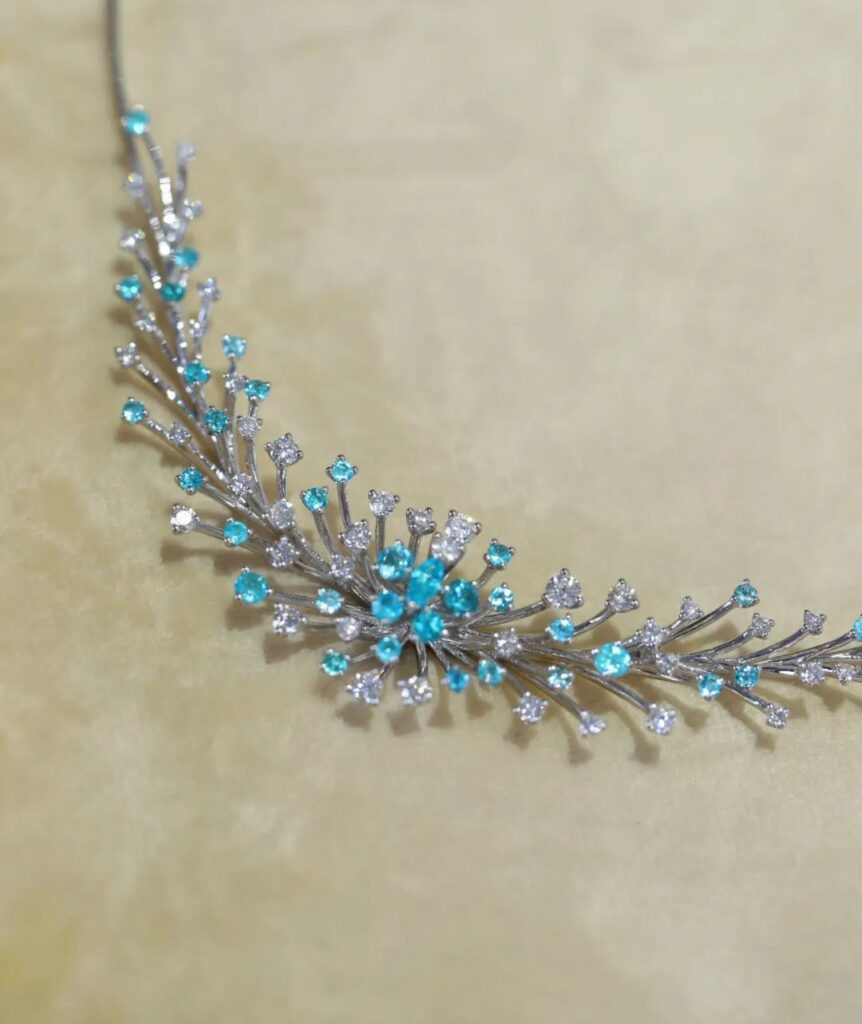
When buying Paraiba tourmaline, you’re essentially buying its rare, world-class color. This astounding color bestows the gemstone’s value: the more intense, saturated, and vivid the color, the more expensive the stone. Moreover, one of the primary identifying characteristics of Paraiba tourmaline is its vibrant, intense neon-like quality.
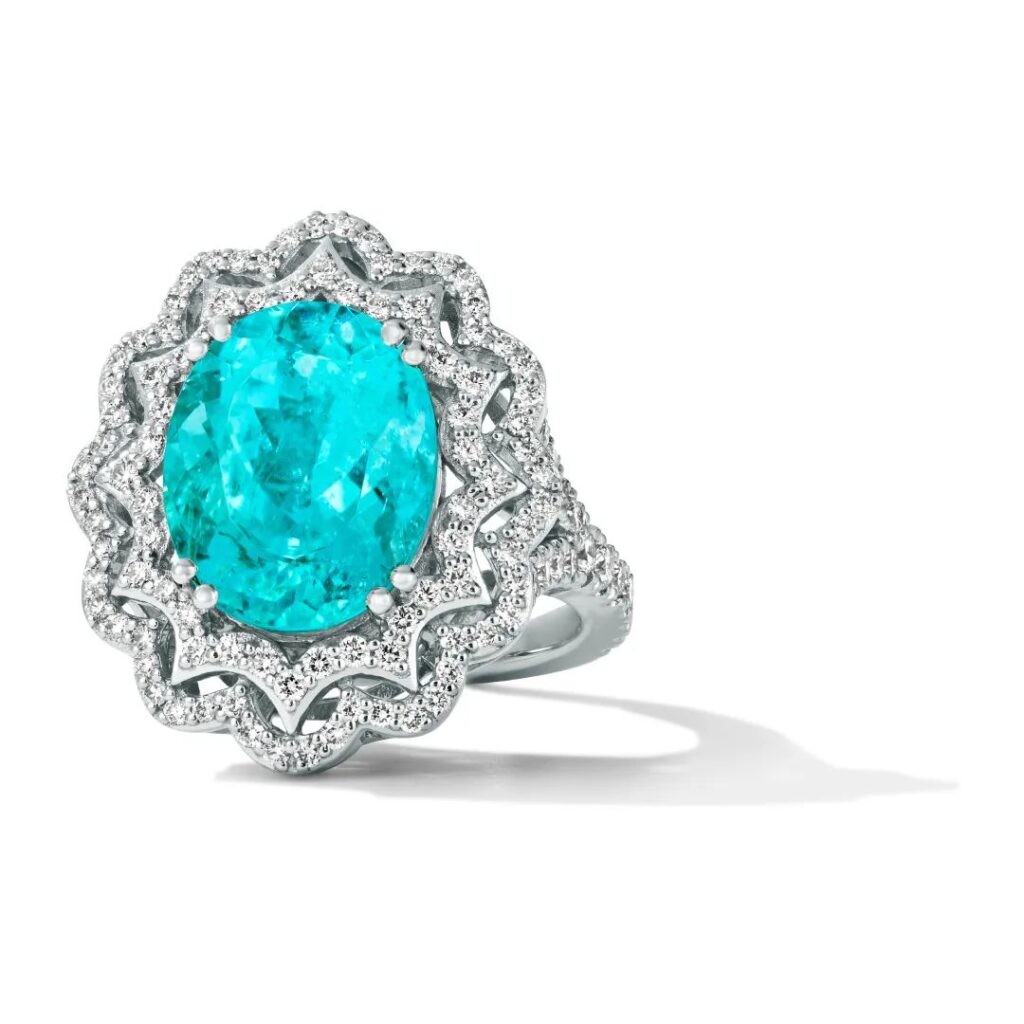
Currently, the most popular and highest-priced Paraiba tourmalines in the market are neon blue, with strong saturation and medium tone, or with a slight green tint. Next in line are those with more noticeable green and deep blue hues. Lower-priced options include purple or blue-purple varieties.
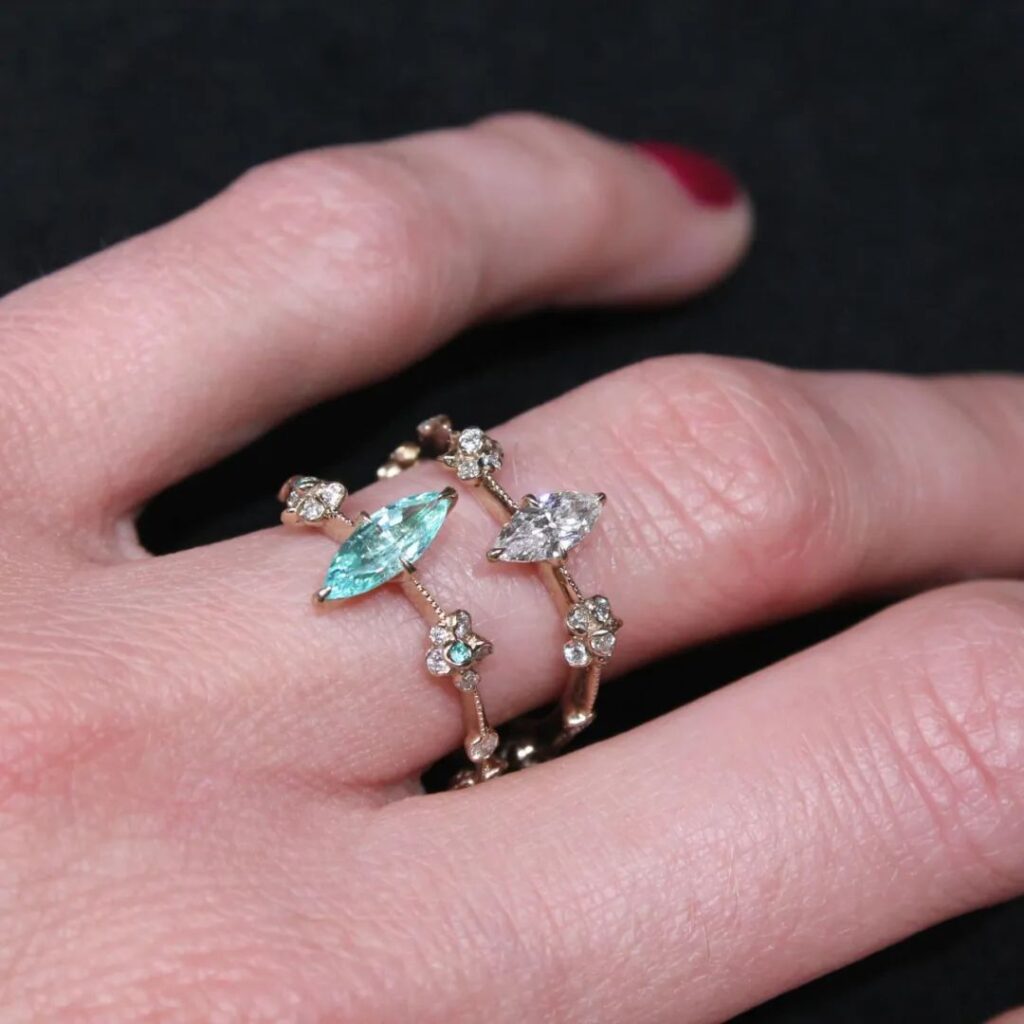
Paraiba tourmalines are typically small, usually less than 1 carat. Crystals over 1 carat command a very high premium. When selecting Paraiba tourmaline for daily wear, color is more important than size. Many smaller Paraiba tourmalines with more beautiful colors are more valuable than larger ones with dull colors.
Although we often say “a hero’s worth isn’t determined by their origin,” the market values rarity.
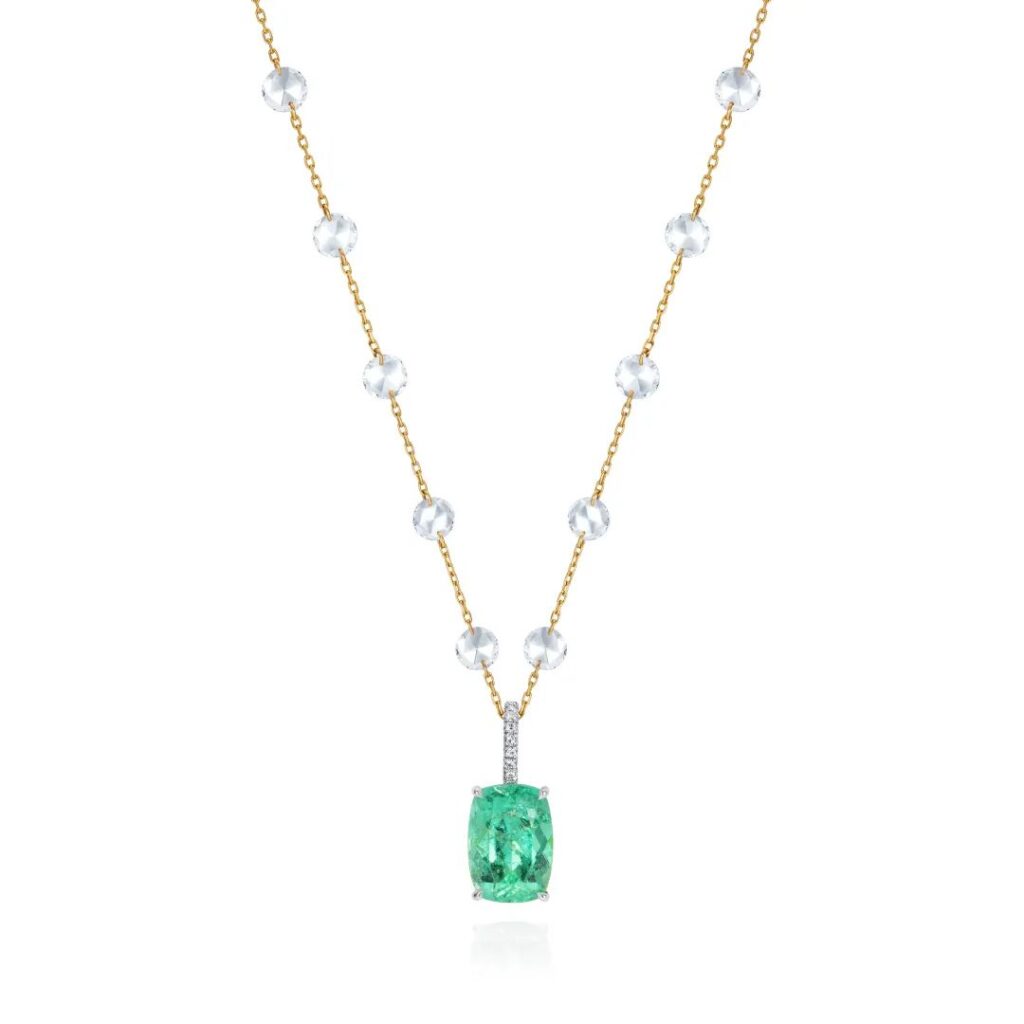
Paraiba tourmalines from Brazil are more expensive due to their rarity and are often favored by collectors. Those from Nigeria have vibrant green hues but currently have unstable production. Mozambique Paraiba tourmalines, with good color and stable supply, are currently the mainstream source in the market, making them relatively more affordable.
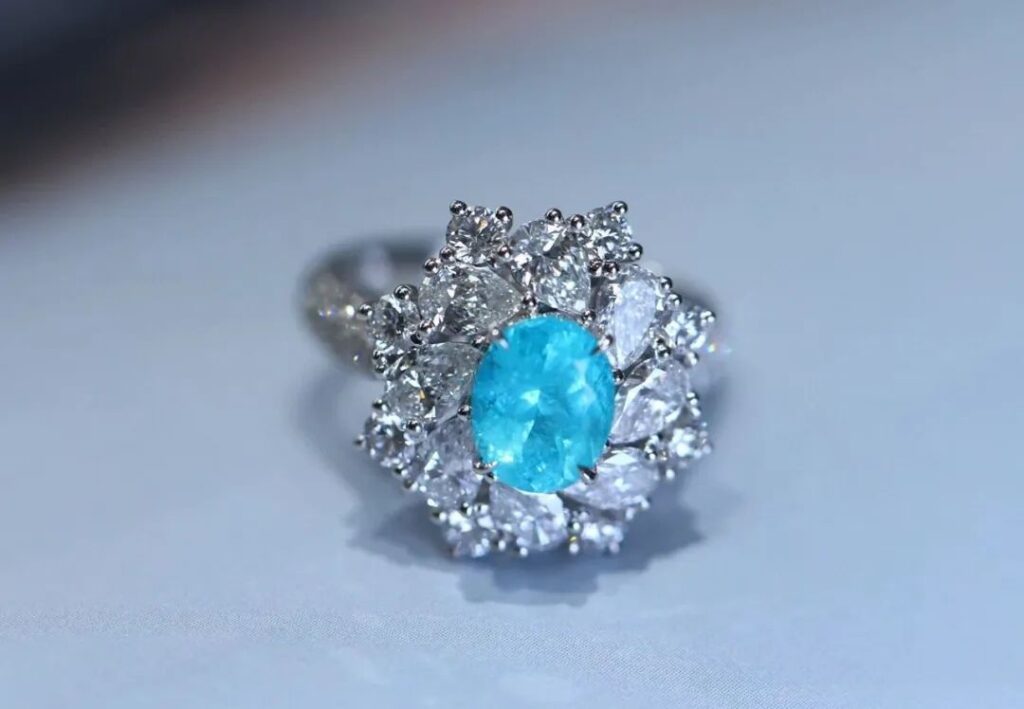
If you want to collect gemstones from depleted mines, choose those of Brazilian origin. If you want a beautiful gemstone at a more affordable price, focus on appearance and price rather than origin.

The clarity of Paraiba tourmalines is generally very low. Due to their extreme scarcity, people are reluctant to sacrifice beauty for clarity, leading to an almost bottomless tolerance for clarity standards. For example:
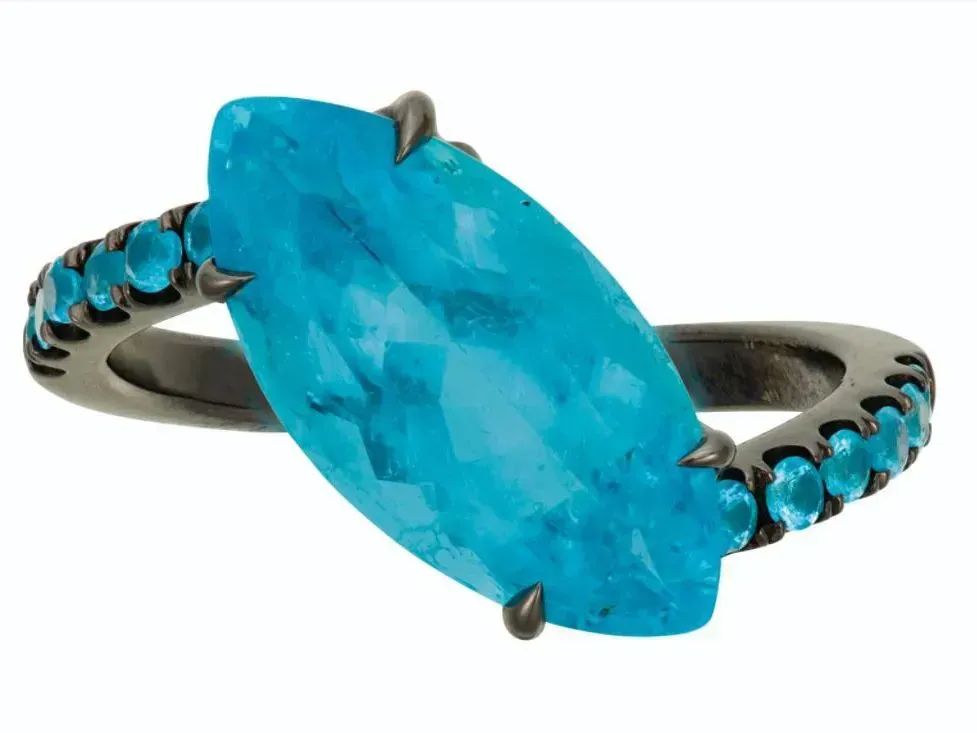
The ring pictured above features a 4.22-carat Brazilian Paraiba tourmaline. Despite undergoing low-temperature heat treatment and having low clarity with visible lack of transparency, it still sold for $112,000 at a Christie’s auction in 2021.
Some brands even design jewelry based on the inclusion patterns in Paraiba tourmalines. For instance:
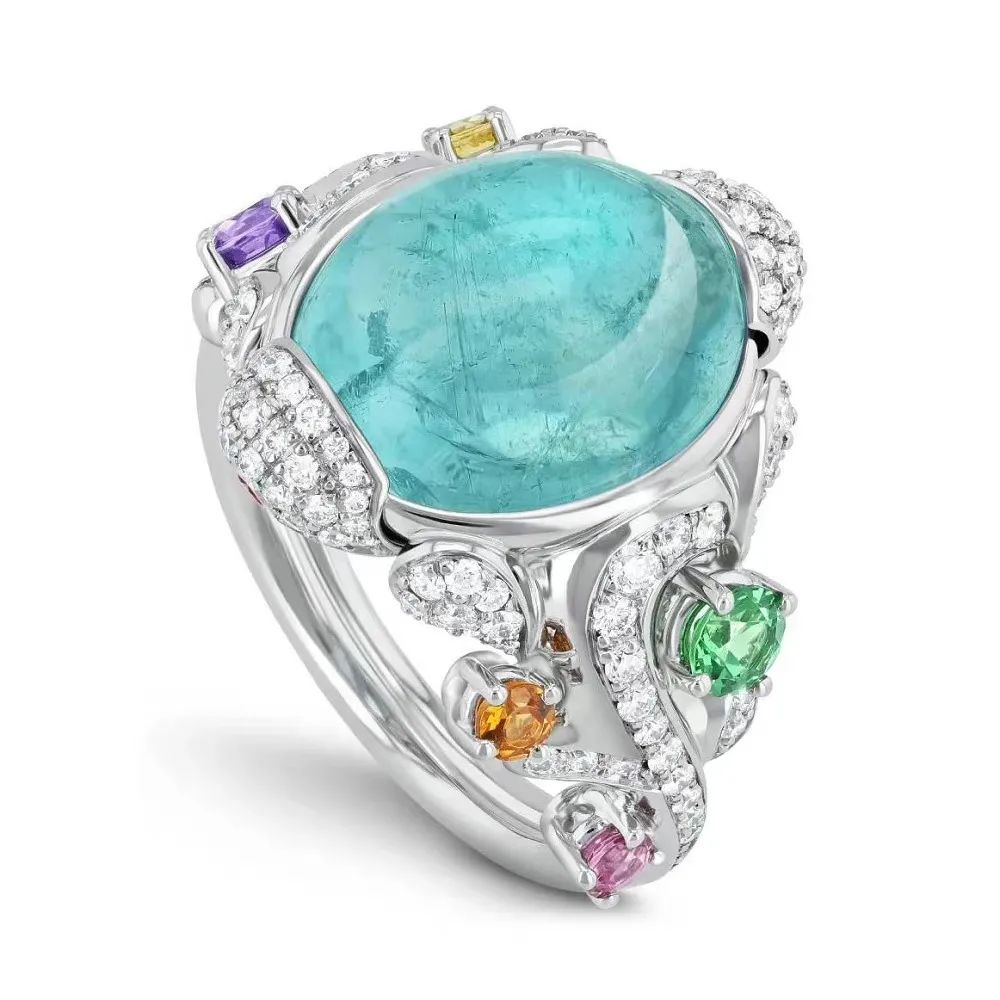
The ring shown above has a 7.65-carat Mozambique Paraiba tourmaline as its center stone, displaying a brilliant electric blue color. The designer drew inspiration from the natural inclusions in the Paraiba tourmaline, accenting it with pink tourmaline, blue tourmaline, spessartite garnet, yellow beryl, pyrope-almandine garnet, amethyst, and diamonds, creating an overall fresh color scheme that perfectly suits the summer atmosphere.
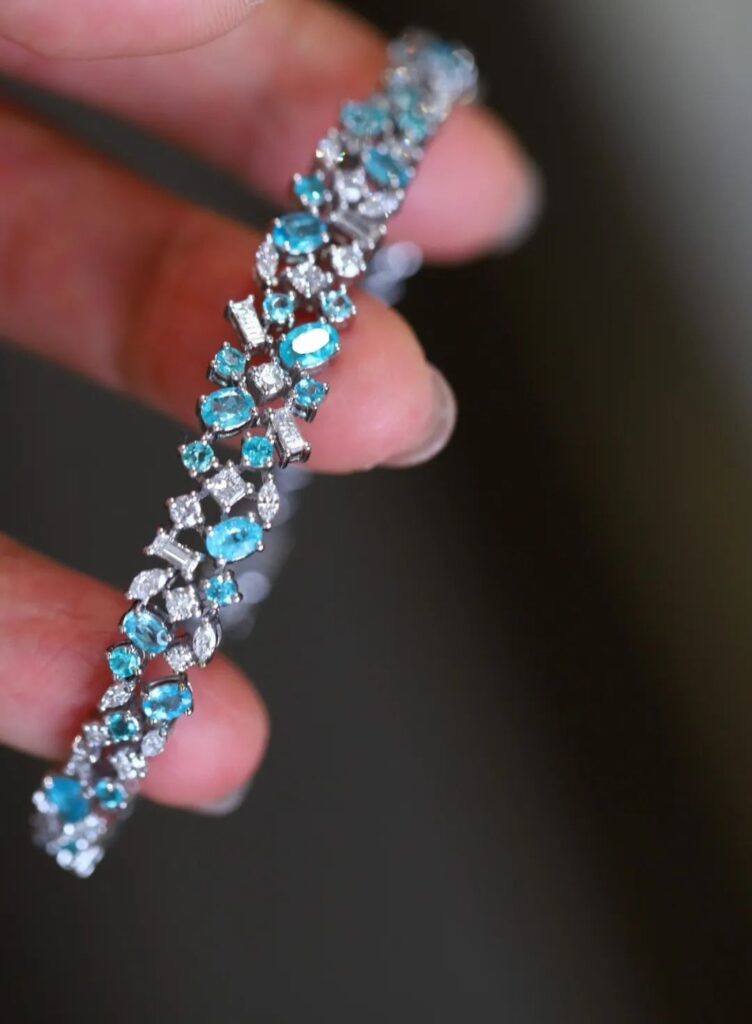
However, considering the aesthetics and value of the gemstone, the author’s “bottom line” standard is: no large, dark, obvious inclusions on the table; no fractures large enough to compromise the gemstone’s security; and light-colored inclusions should not exceed 1/3 of the overall gemstone. After all, it should at least look good, right?
The Ultimate Guide to Paraiba Tourmaline: A Luxury Jewelry Connoisseur’s Dream
Tweet





